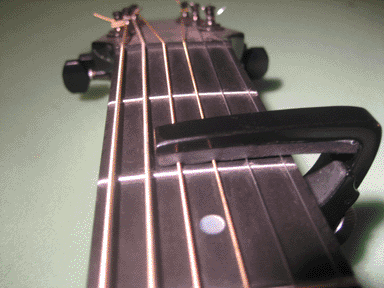A while back, when I first found out about the Alesis iO Dock, I started
thinking about the iPad as the centerpiece of a minimalist do-it-all rig, that would suit what I (think I) want to do. I still think it's a pretty good idea, and Alesis' new
AmpDock seems to be a step above the iO Dock in several very important respects. Had I an iPad of my own, I'd probably already be down that path.
Here, about a year later, due to a couple of
really interesting discoveries and my first week on the road in several years, I'm starting to think about the iPhone as well. First, and the software centerpiece of the idea, is the
FourTrack app from Sonoma Wire Works:
Now if I'm reading everything right, this is one
nifty app; it's not just an app in a vacuum but a framework for plugging in other related apps like loops, FX, etc., and hopefully (more on which in a moment) hardware. It strikes me as well-designed and easy to use, based on the YouTube presence (just consider
this one, done by a user rather than by Sonoma itself.). Oh yeah, and it's five bucks for all the starter stuff. (Thus far it does
not appear that people have been complaining that you have to make lots of in-app purchases to do meaningful things, which can be a gotcha with iOS apps in general.) Sonoma also offers GuitarTone (an FX/modeling app with a free core and available paid upgrade plugins, which both works standalone and as a "tool" within FourTrack), several variants of the InstantDrummer app (creates drum patterns/loops and is also a "tool" within FourTrack, at $3 per "style" specialty), and even a boutique partnership app called Taylor EQ (like GuitarTone, also a standalone app and FourTrack "tool"; this one offers EQ to emulate or cement the Taylor guitar sound). The set of apps also has the capacity for "audio copy/paste" and offers a creative way to conveniently get at your sound files for reprocessing in a traditional software DAW. (Being a software developer myself, some of these tricks not only promise great functional utility, but actually endear the company to my "scrapper-friendly" aesthetic.)
This seems to solve, for me at least, the problem of some sort of serious competition to GarageBand in terms of being able to do both FX and basic multitrack recording at the same time. For this, it needs only a serious hardware interface, and although Sonoma's own
GuitarJack seems solid and well-regarded, and truly able to do much of what I would want to do on an iPhone (especially on the road), last night I stumbled onto the Tascam
iU2. Check this out:
This little box, through some creative cabling and switching, offers two simultaneous inputs for either 1/4" or XLR cables, optional phantom power, internal preamps, mic/line selectors (or a guitar DI on the left channel), standard MIDI I/O, RCA and digital outs, direct monitoring--in short, a usable 2x2 hardware interface. Here's where it gets really interesting, though: this unit can deliver to an iOS device through an external dongle for the 30-pin dock,
or can go via USB to a computer like a traditional recording interface. When connected to the computer, it's powered by the computer's USB cable; when connected to the iOS device, it's device-powered--and you can take the device's power brick and hook it into the iU2's USB port, in which case your device's AC brick recharges the device through the iU2. Now
that's clever, and useful.
So: if you have access to a computer for recording, you can use that (like the PreSonus AudioBox USB I'd figured I'd get someday, which offers basically the same input features); if you are fully portable or on the road, use the same box to go directly into the device. It seems to have a nice small footprint: 4.4" square and not an inch thick; it looks to be hardly larger than the Pandora PX4 I carried around for so many years on the road, but coupled with the iPhone it's tremendously more powerful. And at $150 or so, it looks like once again I may be able to pay less and get more.
I have not validated yet that the Sonoma apps will recognize the iU2, but I'm hopeful. If I'm on the road enough, it may be worth it to me to also get the GuitarJack and the recommended microphone just for the ultimate in compactness, but after playing a bit with Line 6's MobileIn interface, I'd always prefer a separate dock dongle to something that puts angular tension on the device's docking port. (I'd make an exception for the iM2 stereo iOS microphone, which won't have a 1/4" guitar cable dangling off the end; I'm also hopeful that the Sonoma apps will recognize that hardware as well...it should be great for minimalist acoustic instrument or ambient recording.
Food for thought. It's exciting...and getting cheaper, smaller, and better. Technology's fun, isn't it?
__________________________
For anyone who might stumble across this post: if you have contributory opinions I'd love to hear them. How are Tascam preamps regarded, compared to PreSonus'? Any serious loss of quality expected from the "converter" cables that take MIDI and XLR to 1/4"? And for that matter, how about the RCA line outs; any difficulties or problems with those? Anyone have personal experience or knowledge about the Sonoma apps? Are the above ideas totally off the rocker? What is the airspeed velocity of an unladen swallow? (We never did get a good answer to that, did we? :-)




